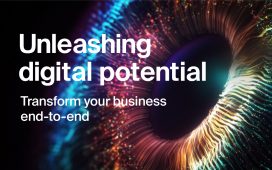Agencies need to place converged experiences in the right consumer context, says Geometry Global’s Nick Walsh.
Talking about a type of advertising and its advantage over other methods of communication turns any conversation, talk, or article into ‘sell’ mode. Have a guy who works in experiential write about experiential and you end up with a sales pitch aimed at a bunch of sceptics. I’m not going to write about the advantages of experiential and why you need it, you won’t believe me anyway.
Instead, I want to talk about a major global trend and how it’s affecting advertising as a whole, including its impact on experiential. The whole thing started with the dot-com rise and fall of the ’90s where we saw a mad rush towards internet companies. The problem at that point was that the sheer growth of dot-com organisations outpaced the consumer adoption rate of the products they were providing. The bubble burst, but only after laying the online infrastructure for organisations that understand consumer adoption and user experience to make billionaires out of their founders.
That took us into the upload era that began in the 2000s. I’m not calling it the digital era because so far, digital is not a finite era, rather a state we are in. The upload era, on the other hand, is a time-span where people’s priorities shifted from experiencing a situation to making sure the internet sees that they are experiencing a situation. This is the human behaviour that makes social media so powerful and prevalent. It is also, however, the human behaviour that weakens the impact of social media. You see, if everyone is more concerned with the upload than the download, then even sharing something does not mean that they have interacted with it; which is the assumption we make with most of our metrics.
Step into the 2010s and you start hearing a new statement: ‘The internet of things’. Technology has gone from enabling us to make our tangible lives digital to enabling us to make our digital creations tangible. Like any trend, the pick up is following the adoption curve. The interesting part is that wearables and 3D printing have moved from the ‘innovators’ section to ‘early adopters’.
That makes the situation very interesting. We are moving from an era where the novelty of digital interaction is wearing off and digital natives are treating it like another aspect of their lives, rather than ‘the way to do things’. The tangible interaction, the physical experience, is going back to the top of the priority list. That doesn’t mean we should make crazy claims like ‘digital will die’ as much as we needed to claim that radio was getting killed by TV and tablets were killing TV. They’ll all find a place in our consumers’ lives. What we should do is understand that digital interaction is as much a replacement for physical interactions as a video call is a replacement for a hug.
The trend towards making our lives tangible again shows a human need for the experience. What we need to do now is understand the impact of the experience on consumer behaviour. We have all the data showing that active experiences have a higher return than passive observation. We just don’t know how much ‘experience’ it takes to get that return. That’s where the experiential agencies are growing most. We’re working on models that understand levels of interaction and their return. We’re studying how a 20-second conversation can lead to a sale while a 90-second conversation can lead to eyes glazing over. We’re understanding how putting an experience in the right context gives rewards that are way beyond the right content in the wrong setting.
The conclusion is that the contextual experience has always been a high priority to our consumers. The difference between this era and the last is that the previous decades were full of digital technology trying to emulate the experience by putting it online while the new technology is helping the online and offline merge by making the digital more tangible. The future of experiential lies in understanding the convergence of technology with the tangible. Does that place the future of experiential in the hands of the digital or activation agencies? The simple answer is that it lies with the agencies that will place those converged experiences in the right consumer context.
(Nick Walsh is general manager, UAE at Geometry Global. This article appears in the #Predictions issue of Campaign Middle East dated 11 January 2015.)










